By: Edward Spannaus
If you have visited the Lovettsville Museum, you may have seen a display called “How We Got Here: The Palatine Emigration to America, and to the German Settlement.” The display traces the early 1700s routes of travel from the German Rhineland to the Lovettsville area, and it includes a map of the Palatine Settlements in New York State, which were located in the Hudson, Mohawk, and Schoharie Valleys.
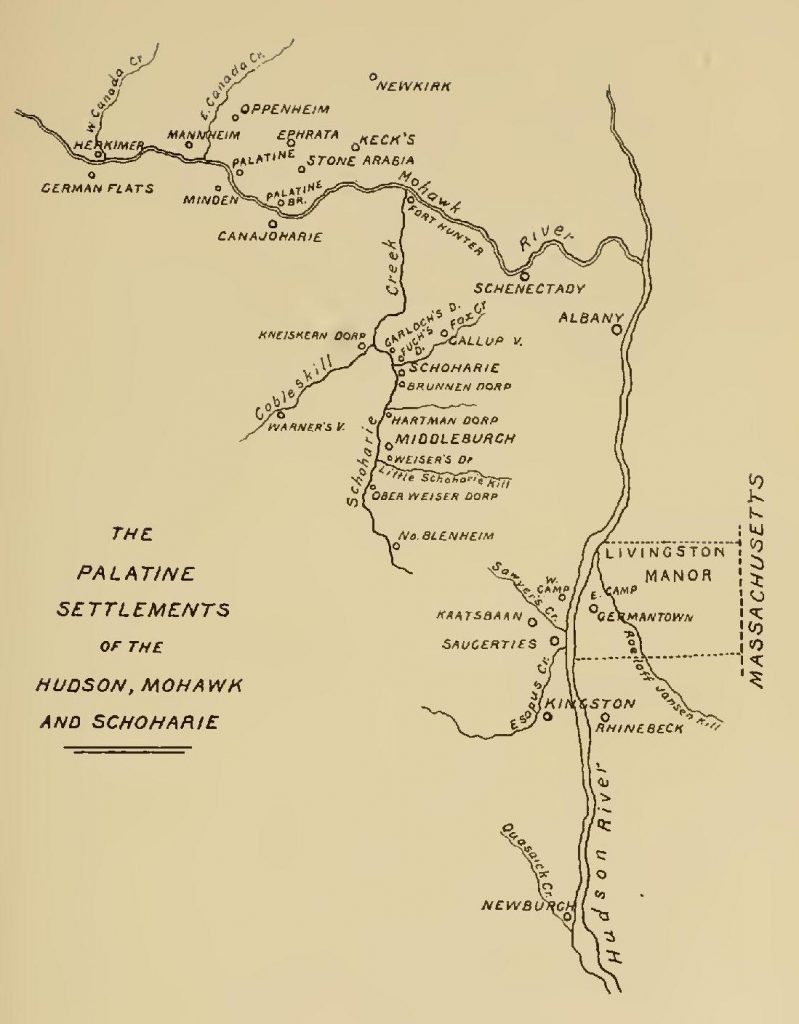
In the first article, published in our January newsletter, I wrote about a visit to the Mohawk Valley in upstate New York last December, and the still very-visible historical presence of “Palatine” Germans in that area – from the same Palatine emigration from the German provinces who settled in the Lovettsville area in the 18th century, when this was known as “the German Settlement.”
This June, my wife and I returned to the Mohawk Valley for a Revolutionary War conference,i during which I broke away to visit the Schoharie Valley to learn more about the Palatine settlements there. We also took a guided bus tour of the “Drums Along the Mohawk” area, which began with a visit to the 1770 Palatine Church and remarks from a spokesman for The Palatine Association which maintains the old church building. Unlike last winter, this time we were able to enter the church building. One of the striking features is the organ—restored, not original—which is modeled on the famous Tannenberg organs made in Lititz, Pennsylvania. The church was almost burned by British troops and their Indian allies in 1780.
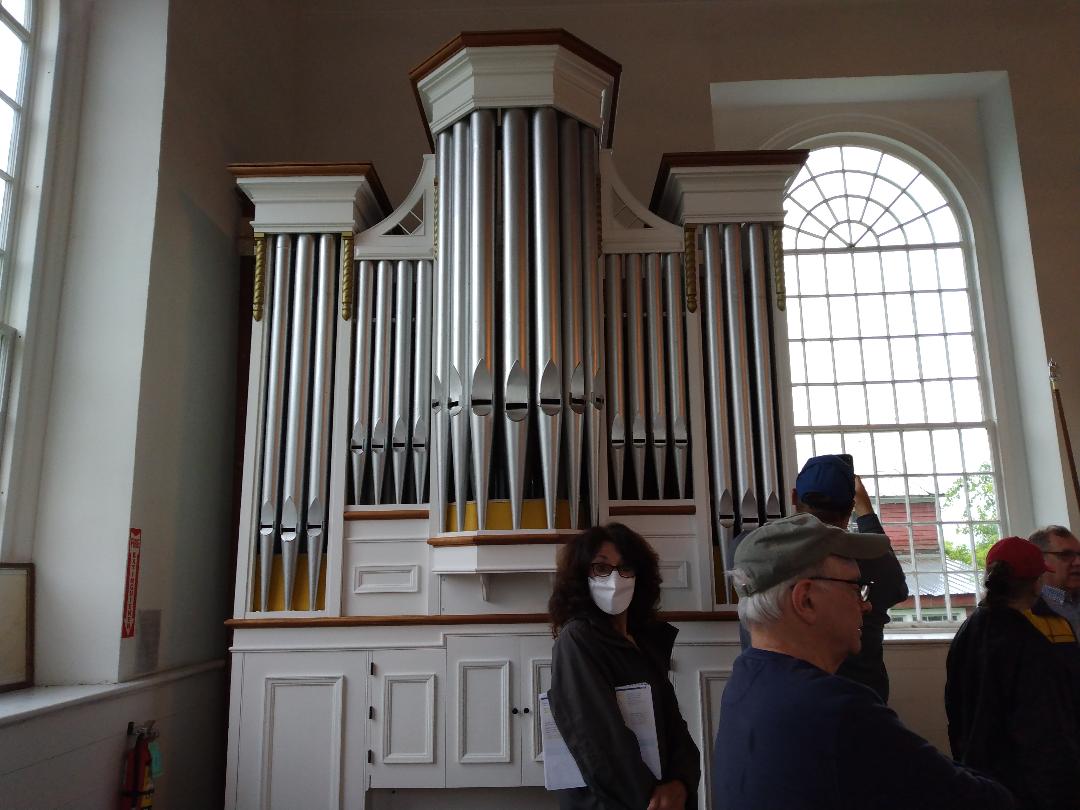

The next day, I drove over to Schoharie, which was settled by German Palatines in 1712. They came to the Schoharie Valley from the Hudson Valley to the south, to which they had been transported from England in 1710 for the failed project to collect pine sap (tar) for the British Navy. The group that came to Schoharie from Livingston Manor was led by John Conrad Weiser, the father of the famed Conrad Weiserii who later served as Pennsylvania’s (and Virginia’s) ambassador to the Six Nations. John Conrad Weiser Sr. had been a village magistrate, and a corporal in Württemberg’s Blue Dragoons.
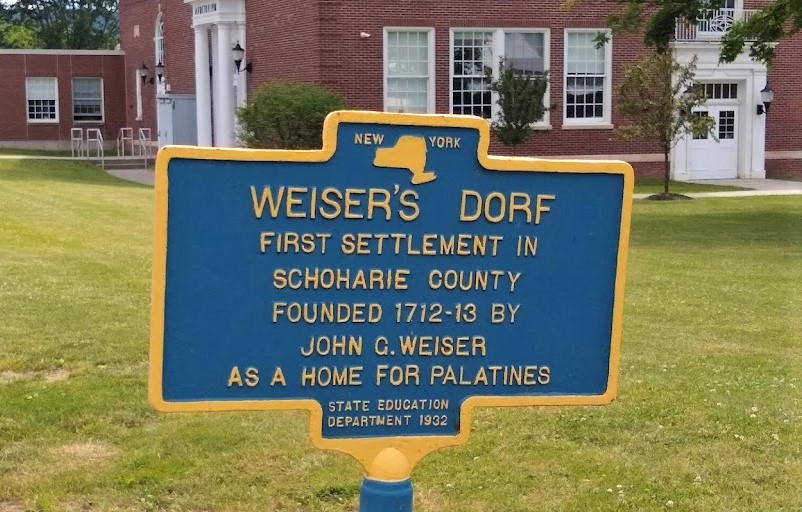
John Conrad Weiser Sr. led the first 50 Palatine families to Schenectady, from which they cut a road to the Schoharie Valley. Meanwhile, Weiser agreed to a proposal from the Mohawk chief that he send his 14-year-old son Conrad to live with the Mohawk tribe, so he could learn their language and culture. Young Conrad became an adopted member of the Chief’s family.
Around 1714, Weiser Sr. relocated from “Weiser’s Dorf” a few miles south to what became known as “Oberweiser’s Dorf” – probably a reference to his senior status in both the old world and the new.iii This village became a center of Palatine-Mohawk diplomacy — much to the irritation of Gov. Hunter, who had the sole authority for Indian affairs from the British Crown, and who regarded Weiser as interfering by acting as an advisor to the Mohawks.
By 1718 there were about 680 Palatines living in the Schoharie Valley.
Driving through the Schoharie Valley today, one sees many references to the Palatines. On the south side of the town of Schoharie is the “Palatine House.” Another sign at that location says that the building is the “Old Lutheran Parsonage” which was placed on the National Register of Historic Places in 1972. A plaque closer to the building states that this is the site of the first parsonage of Dominie (Reverend) D.N. Sommer, the Lutheran parson, erected in 1743.
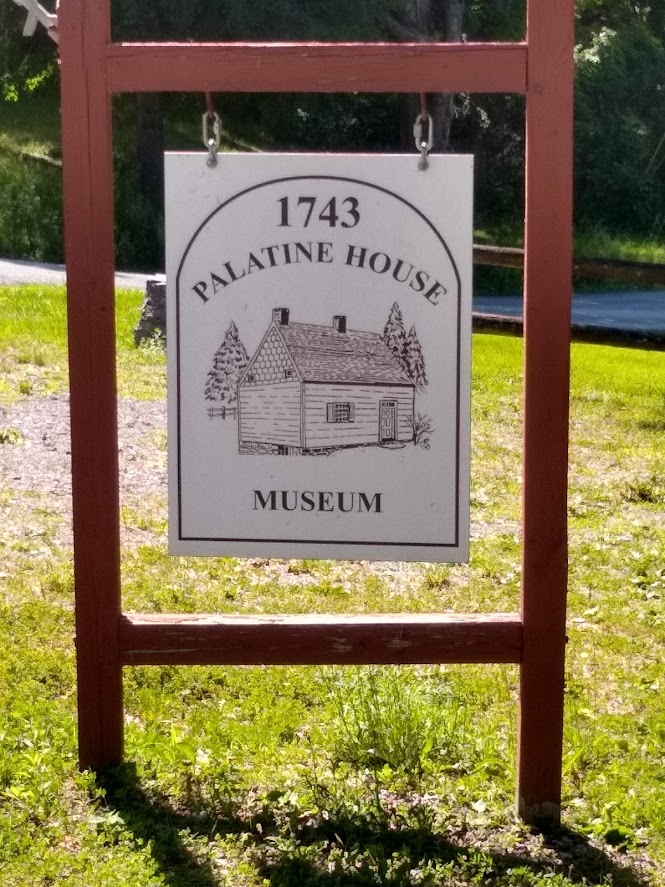
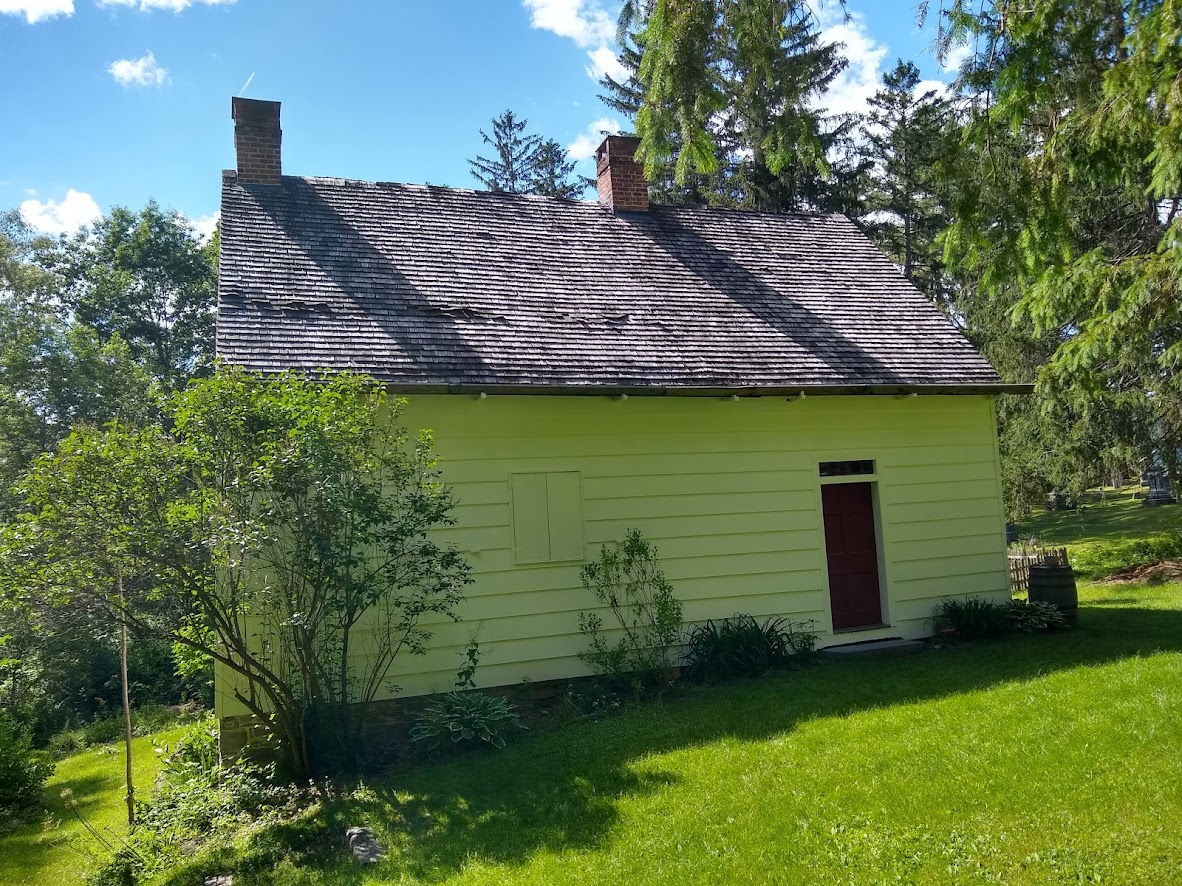
The Old Stone Fort
The most important site to visit in Schoharie is the Old Stone Fort.iv The town itself was originally known as “Fuchs Dort,” or Fox Town. The fort building was built as the “High Dutch” (German) Reformed Church in 1772. In 1777 it was fortified, as upstate New York entered the Revolutionary War to repel the British invasion out of Canada, led by British General Barry St. Leger, whose force was composed of British regulars, local Loyalists, and Mohawk and Seneca warriors who were allied with the British. After the Revolutionary War, the building was again used as the German Reformed Church until 1844, when the congregation split, and both factions built new church buildings. For time the Old Stone Fort was used as a school, then the State of New York took it over as an arsenal. For the past 130 years, it has been a museum, operated by the Schoharie County Historical Society.
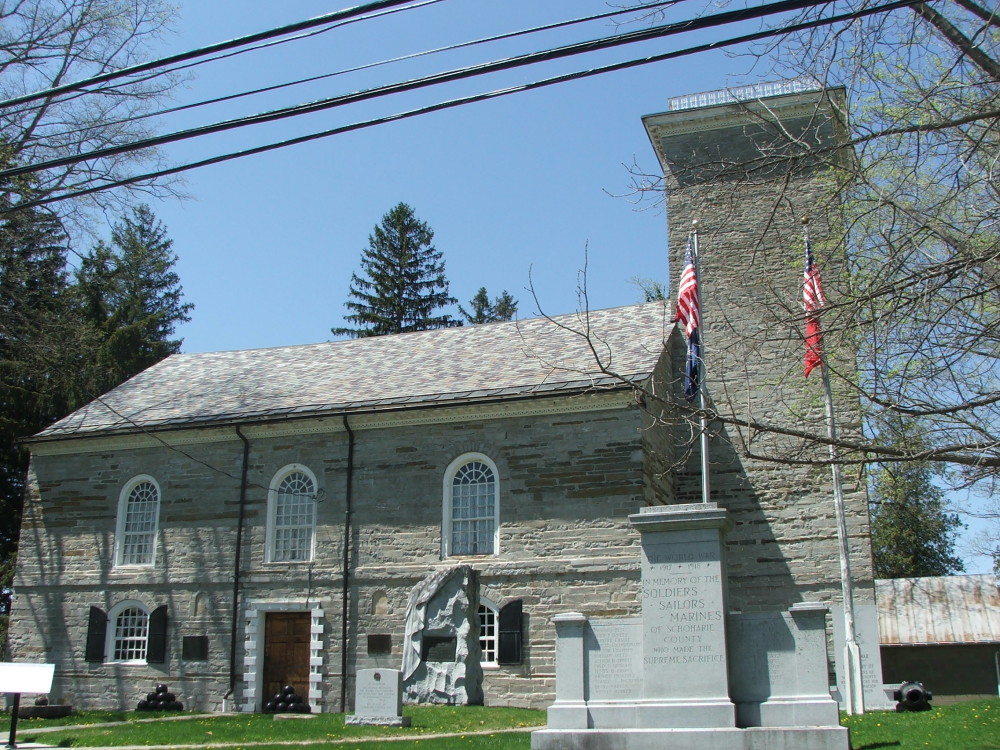

The Museum Complex – consisting of eight buildings – features three centuries of rural New York history. The exhibits range from a restored 18th century German Palatine dwellinghouse from Hartmann’s Dorf (probably rebuilt after being burned by the British in 1780), an 18th century Dutch barn, a 19th century schoolhouse, barn, and dwelling house, to early 20th century exhibits in the Bagley Annex. Of special interest is the display of agricultural tools used in the county over the past 300 years.
New York – Pennsylvania – Virginia
In the early years of settlement, a series of sometimes-violent land disputes led to a further Palatine dispersal away from the Schoharie. Some moved to Stone Arabia and the German Flats in the Mohawk River Valley (see previous article for pictures of Stone Arabia).
The largest number travelled down the Susquehanna River to the Tulpehocken Valley in southeast Pennsylvania, near what is now the city of Reading, of which Conrad Weiser is considered the founder.v Conrad Weiser’s daughter Maria married the Rev. Henry Melchior Muhlenberg, the Patriarch of the Lutheran Church in America. And thus, Conrad Weiser was the grandfather of Revolutionary War General Peter Muhlenberg (8th Virginia Regiment), and of the first Speaker of the House of Representatives, Frederick Muhlenberg.
All in all, about 80 Palatine families went to the Tulpehocken Valley in Pennsylvania from the Schoharie Valley in the years 1723-1727.
As we pointed out in the first article, it is believed that among these 80 families, some later came to the German Settlement in Loudoun County. We have not yet been able to document this, but we have family histories of a number of Lovettsville families which show them coming here from the Tulpehocken/Reading area in Berks County, Pennsylvania.
Bibliography
[i] For descriptions of the Fort Plain conference, see here and here.
[ii] In 2014, the Lovettsville Historical Society held a lecture “Conrad Weiser: Three Journeys of a Palatine Immigrant,” presented by John Conrad Weiser of Frederick County MD, who is a direct descendant to the pioneers John Conrad Weiser Sr. and Jr.
[iii] Jeff O’Connor, The Old Stone Fort: Guardian of Schoharie County History Since 1772. (Turning Point 1777 Publications, 2020), pp. 4-7
[iv] See O’Connor, The Old Stone Fort.
[v] Some of my Palatine ancestors, the Loys, lived within a few miles of the Conrad Weiser homestead, before removing to Frederick County MD in the late 1730as.

